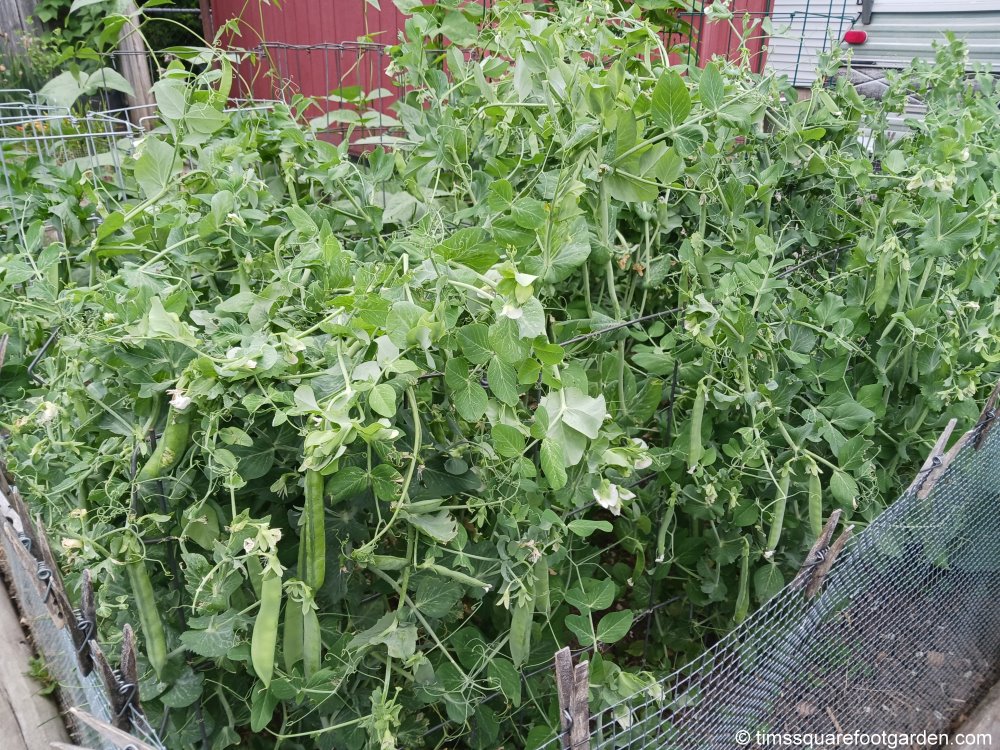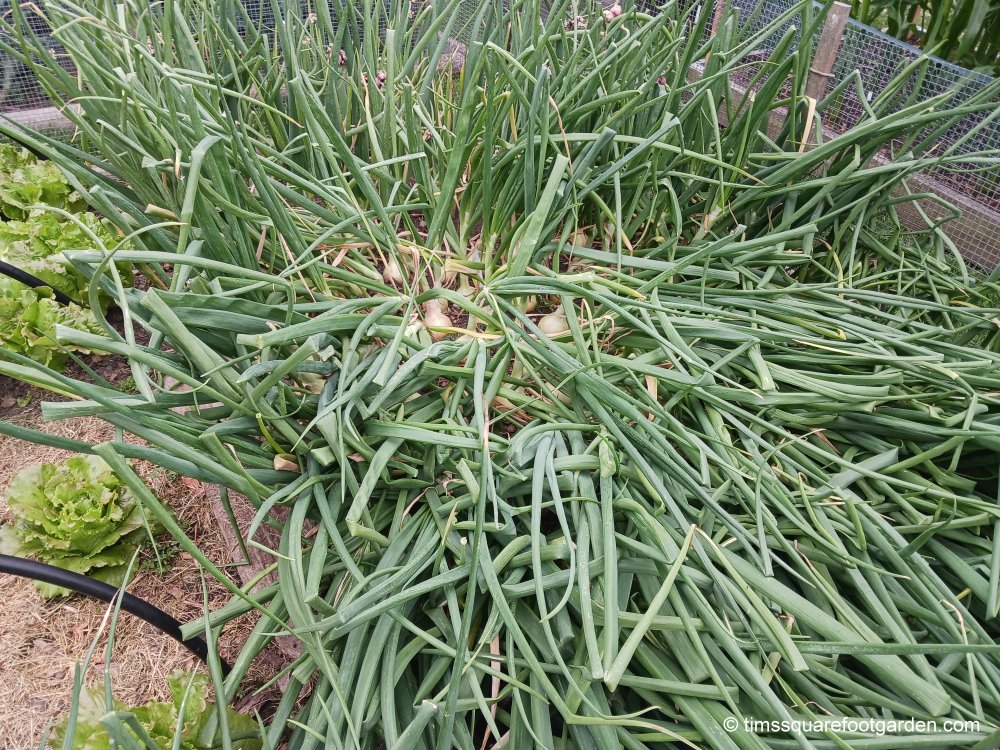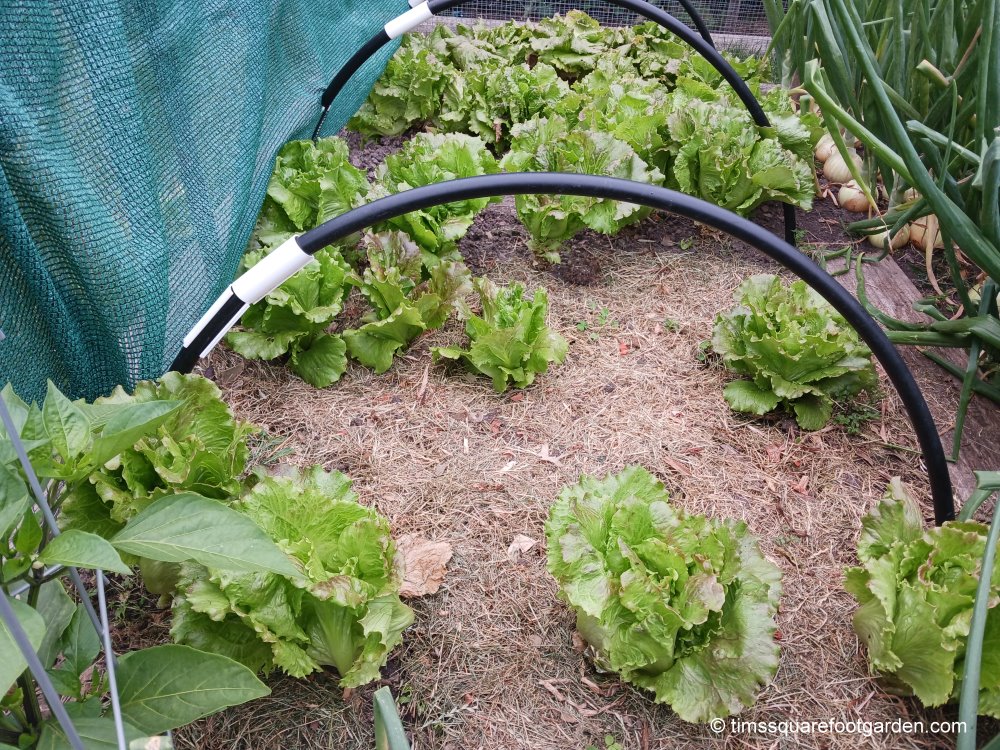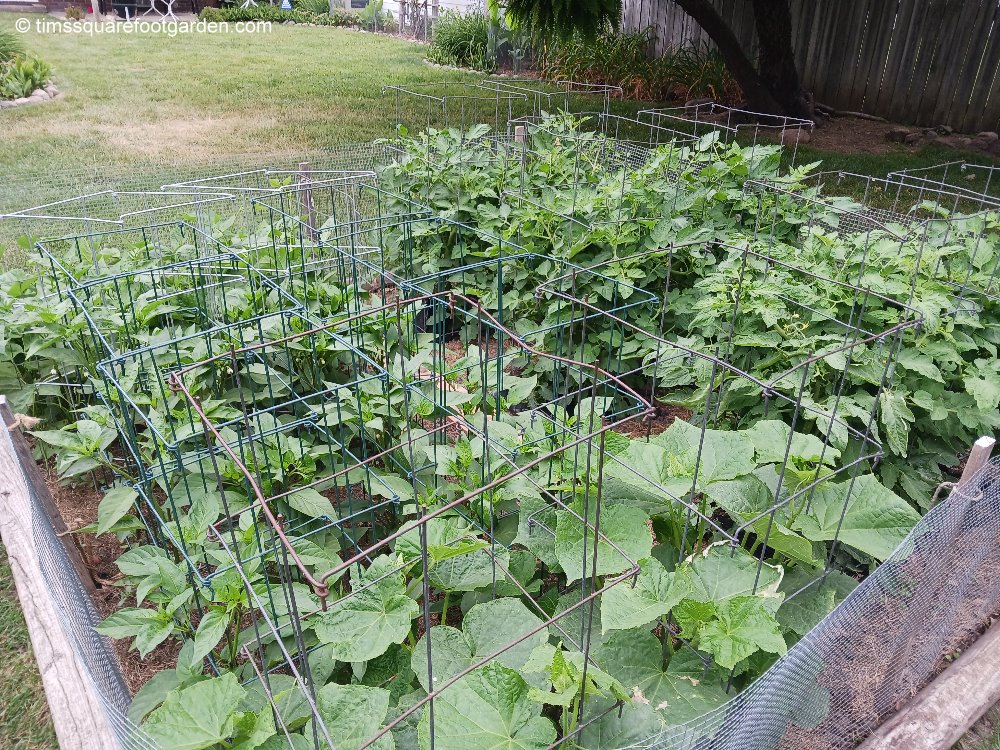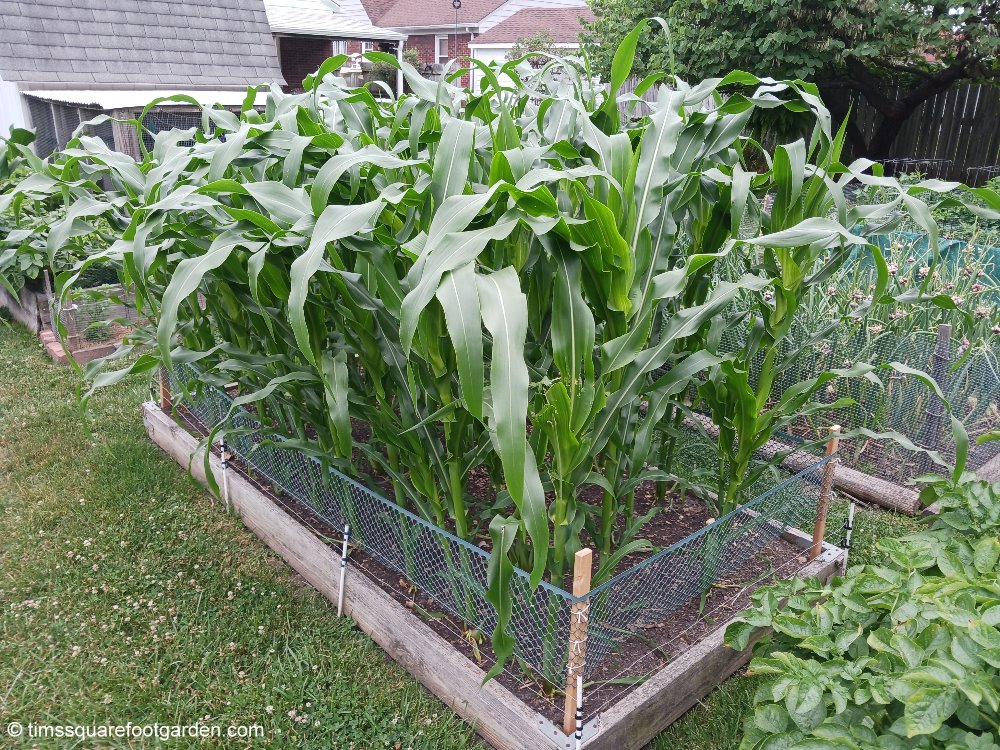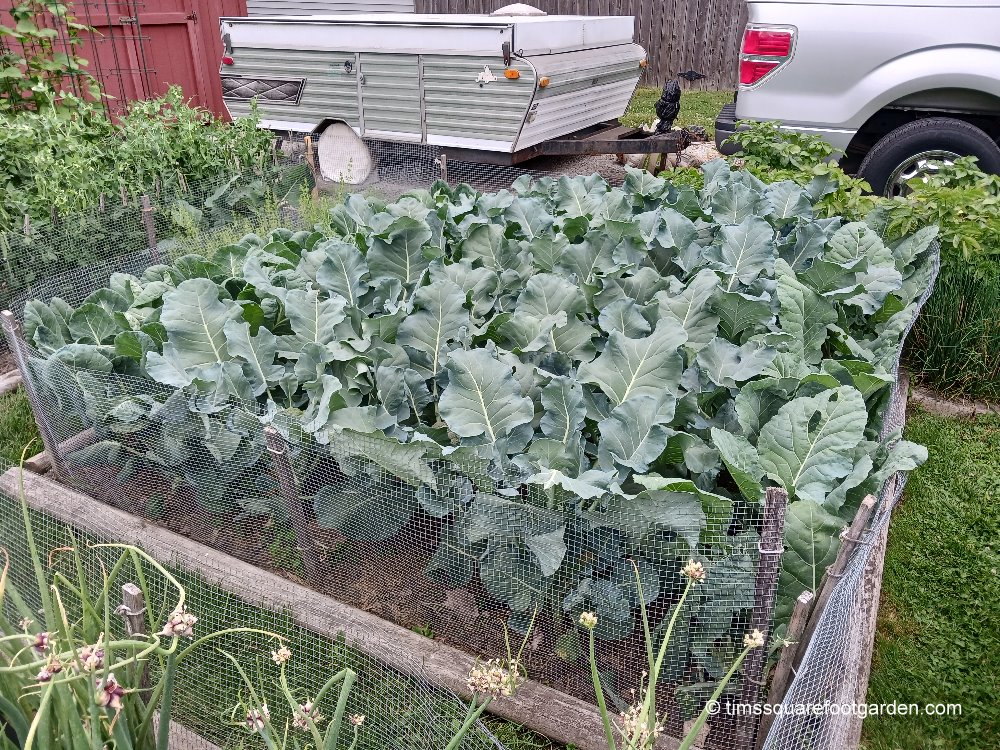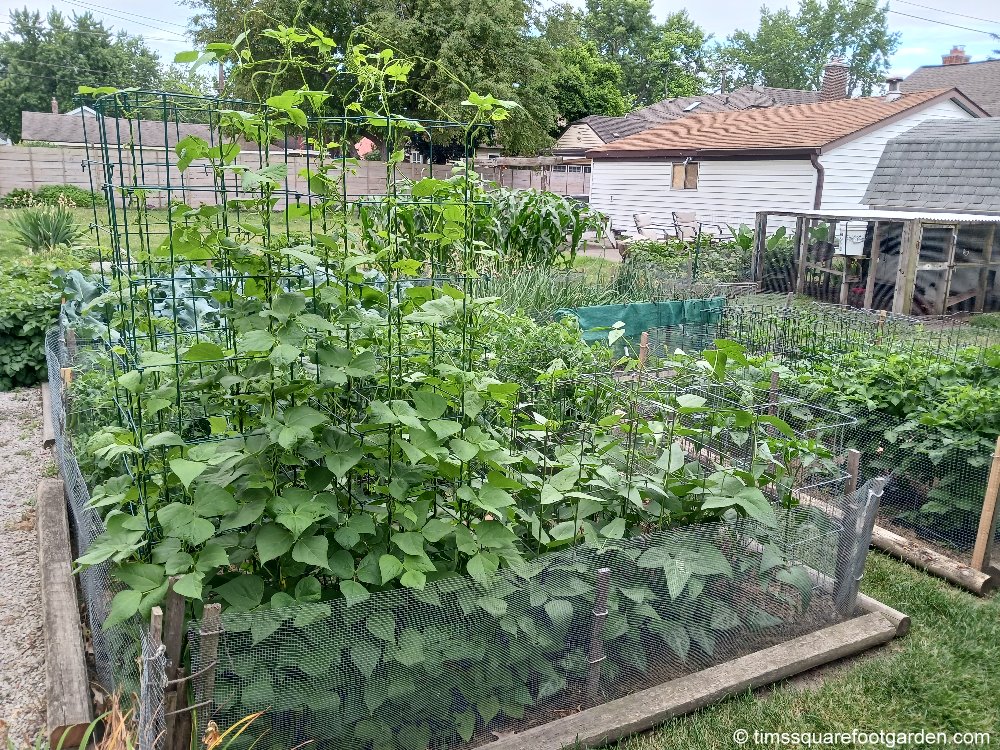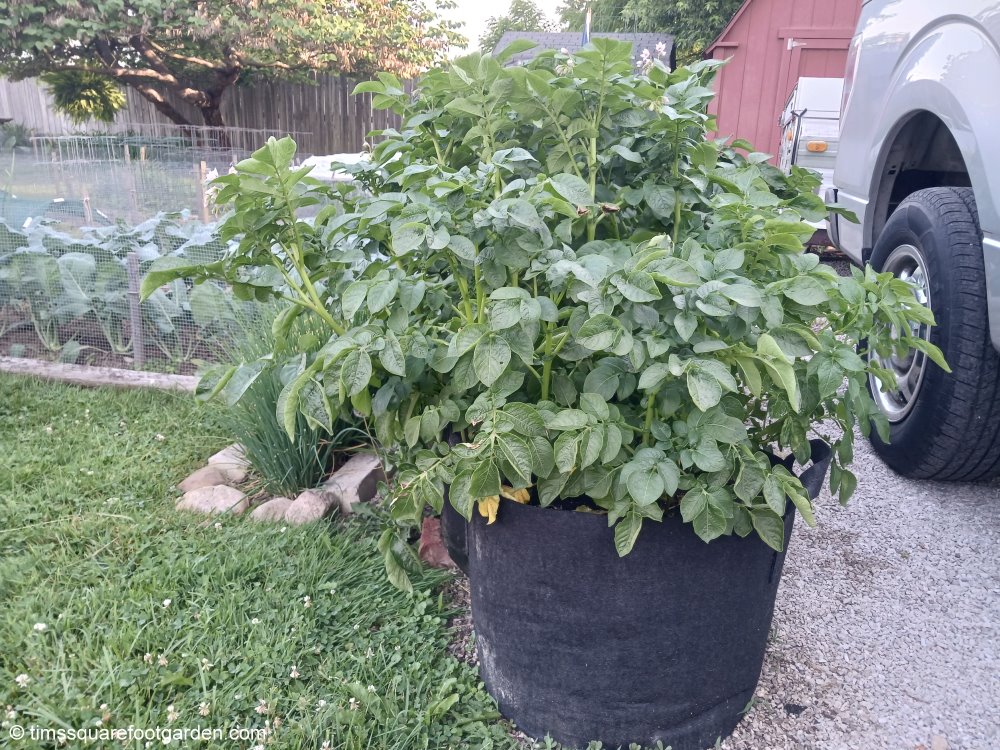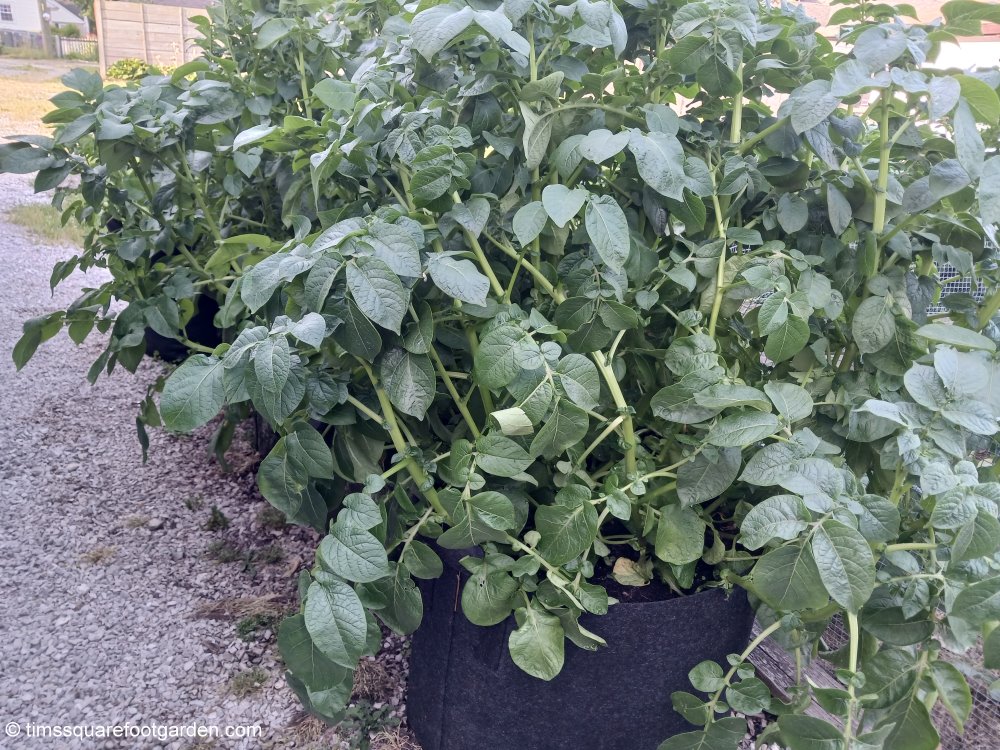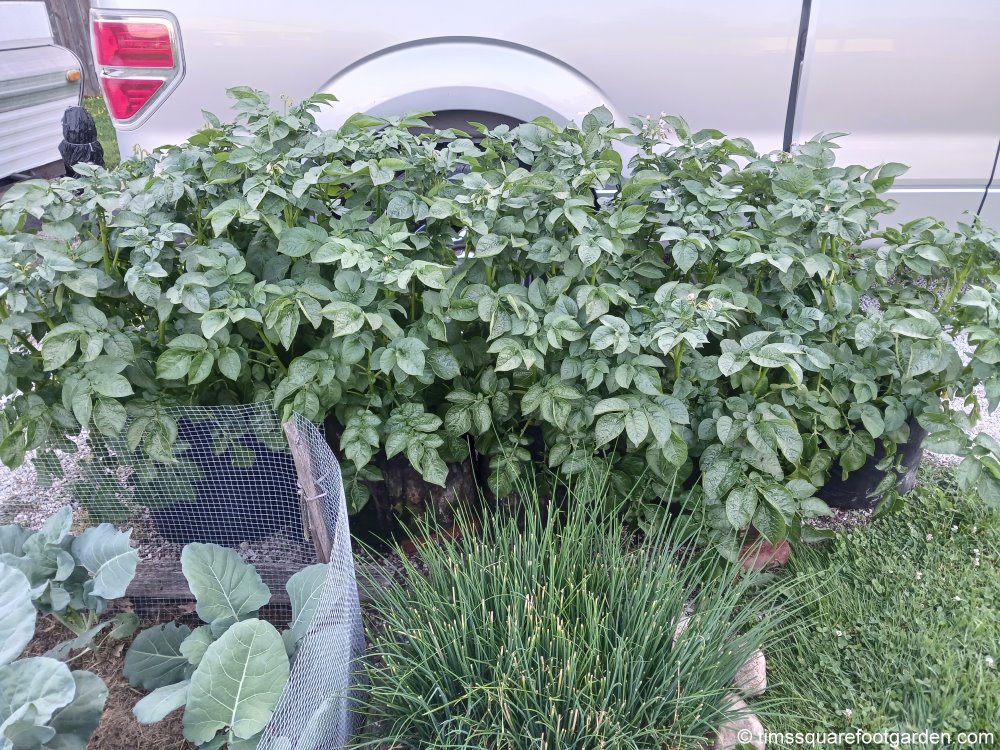Well, it is now official. We are now in a moderate drought here in Indianapolis. The very wet and cold March is now but a distant memory. Obviously, I have been watering the garden on a regular basis now. Despite the drought, the garden continues to grow and produce. Harvest still continues on the lettuce and the first harvest of broccoli will begin today, hooray!! I have started to harvest a few Green Arrow peas, with many more to harvest over the next few weeks. I have been having all kinds of problems with sparrows pulling on the leaves and tendrils of the pea plants. It got so bad that I had to cover the plants with a large row cover, for a time. I have since removed the row cover. A few birds have returned, but not as many as before, so hopefully those issues are passed. Harvest will also start soon on some of the Kossack kohlrabi plants as they are starting to get to harvestable size. The potatoes in the grow bags are just about finished growing and some of the potatoes have started to push up out of the soil, so some harvesting of these potatoes will start over the next few weeks (I am getting tired of watering these bags every other day anyways). The pepper and tomato plants are starting to flower and are getting some good size to them. I even noticed some small tomatoes and peppers on the plants already. The Diva cucumber plants are starting to climb up their cages and should start blooming in the next few weeks. Most of the Rattlesnake pole bean vines have reached the top of the bean towers. The tops of the March planted onions have started to flop over, which is a sign that they are nearing harvest time (it has been 90 days since they were planted out). These onions (Candy and Red Candy Apple) have really bulbed up nicely and it looks like I will have a really good crop of onions for the second year in a row. The Silver Queen corn is getting really tall and should start shooting up tassels soon. Wow, can you believe it is already June 24th. I will start planting seeds of lettuce, cabbage, kohlrabi, broccoli, and cauliflower, for a fall harvest, by early July. I have loaded you up with garden pictures for this post (see below). Happy Summer Gardening!!
As a reminder, if you are not receiving updates to this blog via email please visit the following link and get signed up, it is free: https://follow.it/tim-s-square-foot-garden-blog?action=followPub

